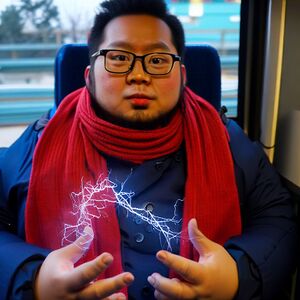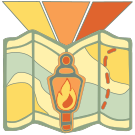Body Scanning: Difference between revisions
No edit summary |
No edit summary |
||
| Line 1: | Line 1: | ||
{{Guide | {{Guide | ||
|Name={{PAGENAME}} | |Name={{PAGENAME}} | ||
|Nutshell=is about one of the most common [[Mindfulness]] practices. Body Scanning is a perfect way to {{Credo|Attention}}, allowing you to quickly and easily connect to body, and practice other meditative concepts such as [[Concentration]] and [[Presence]]. | |Nutshell=is about one of the most common [[Mindfulness]] practices. Body Scanning is a perfect way to {{Credo|Attention}}, allowing you to quickly and easily connect to your body, and practice other meditative concepts such as [[Concentration]] and [[Presence]]. | ||
|Content= | |Content= | ||
There are many resources online about Body Scanning. This Guide presents a few general concepts as well as some [[Landmarks]] that highlight the where and when of different types of Body Scans. | |||
== Muscle Relaxation == | == General Muscle Relaxation == | ||
Muscle Relaxation is an easy and powerful way to practice doing a body scan, which brings you immediately into the present, while reminding you of the arbitrary nature of how you perceive your sensory input. Just like Body Scanning, it can be done anytime you're sitting down for a while... While waiting for the dentist, or watching TV, or when you're in a meeting. Muscle Relaxation tends to be active and physical, whereas Body Scanning is more typically done without judgement. When doing any of these exercises, make use of the following. | Muscle Relaxation is an easy and powerful way to practice doing a body scan, which brings you immediately into the present, while reminding you of the arbitrary nature of how you perceive your sensory input. Just like Body Scanning, it can be done anytime you're sitting down for a while... While waiting for the dentist, or watching TV, or when you're in a meeting. Muscle Relaxation tends to be active and physical, whereas Body Scanning is more typically done without judgement. When doing any of these exercises, make use of the following. | ||
* Every muscle you relax can always be relaxed even more. Make multiple passes until you lose all sense that your body part has any sensation or connection to you at all. | * Every muscle you relax can always be relaxed even more. Make multiple passes until you lose all sense that your body part has any sensation or connection to you at all. | ||
| Line 12: | Line 12: | ||
* Anytime you are "at rest" is an opportunity for a general body scan, either casually or with more focus and attention. | * Anytime you are "at rest" is an opportunity for a general body scan, either casually or with more focus and attention. | ||
== Muscle Relaxation | == Focused Muscle Relaxation == | ||
It can be very useful to learn about your own body and where it typically tenses up. Use various cues throughout the day to remind yourself to be present in your body, and relax that tension. | |||
* Your Head Area - At any moment, become aware of the tension you are holding in your head, neck, and shoulders. You will find you nearly always have some tension there. Practice noticing that frequently | * Your Head Area - At any moment, become aware of the tension you are holding in your head, neck, and shoulders. You will find you nearly always have some tension there. Practice noticing that frequently and take the time to relax the following common areas. | ||
** Jaw | ** Jaw - address any clenching or tiredness | ||
** Eyes - muscles around the eye, the focus of the eye itself, and the deeper muscles within the socket | ** Eyes - muscles around the eye, the focus of the eye itself, and the deeper muscles within the socket | ||
** Breath - how are you breathing? Are you holding your breath without knowing it. Relax your breathing and allow it to be effortless and continual. | ** Breath - how are you breathing? Are you holding your breath without knowing it. Relax your breathing and allow it to be effortless and continual. | ||
** Scalp - practice relaxing your entire hair/scalp area. Although there is no obvious muscle group there, you will find you can do this. | ** Scalp - practice relaxing your entire hair/scalp area. Although there is no obvious muscle group there, you will find you can do this. | ||
** Neck | ** Neck - become aware of your neck and see where you can sense tension. If there are no muscles to relax, move to the areas nearby, including your throat, jaw and shoulders. | ||
** Shoulders | ** Shoulders - simply allow your arms to hang a little lower and your shoulders to take a softer position | ||
* Inside Your Mouth - notice each muscle and each body part, how they are connected, how they are related to your breath, and how there are "open" and "closed" feelings to your mouth and throat as a whole. | * Inside Your Mouth - notice each muscle and each body part, how they are connected, how they are related to your breath, and how there are "open" and "closed" feelings to your mouth and throat as a whole. | ||
** Your tongue is a very active part of your mouth, practice relaxing it frequently. | ** Your tongue is a very active part of your mouth, practice relaxing it frequently. | ||
** Your throat is very perceptible all the way from the opening, down through your neck. Notice the breath in it, and see how relaxing your throat, or even gently "opening" your throat changes your breath and your overall sense of mood or quality of the moment. | ** Your throat is very perceptible all the way from the opening, down through your neck. Notice the breath in it, and see how relaxing your throat, or even gently "opening" your throat changes your breath and your overall sense of mood or quality of the moment. | ||
== | == Going Numb == | ||
Another muscle relaxation practice is to choose a part of your body and simply scan it over and over again, relaxing them more and more until that part of your body (for example, your hands) actually goes numb. Depending on the situation, and how much you've practiced that, you should be able to do this for your entire body. | |||
}} | }} | ||
Latest revision as of 16:02, 22 September 2023
 | |
| Guide: Body Scanning |
|---|
Guides are a Pathway in The Map of Everyday Enlightenment which are typically articles about a particular time and place for meditative practices. Guides contain Landmarks that highlight examples of how this could work for you, as well as other explanations of how to make use of certain concepts or techniques. The Landmarks in Guides can be reviewed in the context of progress through the Realms of Everyday Enlightenment, and when used in that way, Guides become another way to decide where to go next.
The Guide to Body Scanning is about one of the most common Mindfulness practices. Body Scanning is a perfect way to Experience the Now, allowing you to quickly and easily connect to your body, and practice other meditative concepts such as Concentration and Presence.
There are many resources online about Body Scanning. This Guide presents a few general concepts as well as some Landmarks that highlight the where and when of different types of Body Scans.
General Muscle Relaxation
Muscle Relaxation is an easy and powerful way to practice doing a body scan, which brings you immediately into the present, while reminding you of the arbitrary nature of how you perceive your sensory input. Just like Body Scanning, it can be done anytime you're sitting down for a while... While waiting for the dentist, or watching TV, or when you're in a meeting. Muscle Relaxation tends to be active and physical, whereas Body Scanning is more typically done without judgement. When doing any of these exercises, make use of the following.
- Every muscle you relax can always be relaxed even more. Make multiple passes until you lose all sense that your body part has any sensation or connection to you at all.
- Mentally explore muscle groups, looking for new ways to relax them. Discover new muscle areas that are connected to the area under focus.
- Do a full body scan regularly, searching and exploring for new areas that you could relax. Sometimes you can relax an area that has no muscles, simply by letting go, or perhaps by finding which muscles are connected or related.
- Anytime you are "at rest" is an opportunity for a general body scan, either casually or with more focus and attention.
Focused Muscle Relaxation
It can be very useful to learn about your own body and where it typically tenses up. Use various cues throughout the day to remind yourself to be present in your body, and relax that tension.
- Your Head Area - At any moment, become aware of the tension you are holding in your head, neck, and shoulders. You will find you nearly always have some tension there. Practice noticing that frequently and take the time to relax the following common areas.
- Jaw - address any clenching or tiredness
- Eyes - muscles around the eye, the focus of the eye itself, and the deeper muscles within the socket
- Breath - how are you breathing? Are you holding your breath without knowing it. Relax your breathing and allow it to be effortless and continual.
- Scalp - practice relaxing your entire hair/scalp area. Although there is no obvious muscle group there, you will find you can do this.
- Neck - become aware of your neck and see where you can sense tension. If there are no muscles to relax, move to the areas nearby, including your throat, jaw and shoulders.
- Shoulders - simply allow your arms to hang a little lower and your shoulders to take a softer position
- Inside Your Mouth - notice each muscle and each body part, how they are connected, how they are related to your breath, and how there are "open" and "closed" feelings to your mouth and throat as a whole.
- Your tongue is a very active part of your mouth, practice relaxing it frequently.
- Your throat is very perceptible all the way from the opening, down through your neck. Notice the breath in it, and see how relaxing your throat, or even gently "opening" your throat changes your breath and your overall sense of mood or quality of the moment.
Going Numb
Another muscle relaxation practice is to choose a part of your body and simply scan it over and over again, relaxing them more and more until that part of your body (for example, your hands) actually goes numb. Depending on the situation, and how much you've practiced that, you should be able to do this for your entire body.
